Do you ever wish you had your own private garden oasis to escape to, but you don’t have a lot of space to work with? Even if you only have a patio or small deck available to you, I can show you how to create your own garden room entirely with container gardening and vertical gardening techniques.
In 2019, I grew this beautiful small space garden on the deck in my backyard. It soon became one of my favourite spots and I loved having my morning coffee out there. Since it was right by the house, it was also very convenient to grab a few herbs or vegetables, or snip a flower or two to make the table pretty.
It took a few tries over the years to get this space just right. Head on over to this post about all the mistakes I made along the way and how you can avoid them.
A quick disclaimer before we get into the post. I garden in zone 3 in Saskatoon, Saskatchewan, so your results might differ if you live in a different climate.

1. Start with a Colour Palate
You don’t have to have a colour palate, but I like how my my blue pots and accessories contrast against all my orange flowers. If you want to steal the look, you can see my inspiration here.
Next year, I’m going to keep my blue, but try for more pinks and purples flower-wise for more subdued look and see what I like better.
I also think an all-white palate would be beautiful for those who like a more neutral look or spend most of your time outdoors in the evening.
2. Provide Natural Mosquito Protection
Nothing kills the fun of an outdoor garden room than being plagued by mosquitos. That’s why my number one priority every year is to plant at least one pot of citronella or citronella geraniums. That way, when I come to the garden, I can immediately run my hands over the plant and get natural protection for my face and any other exposed parts.
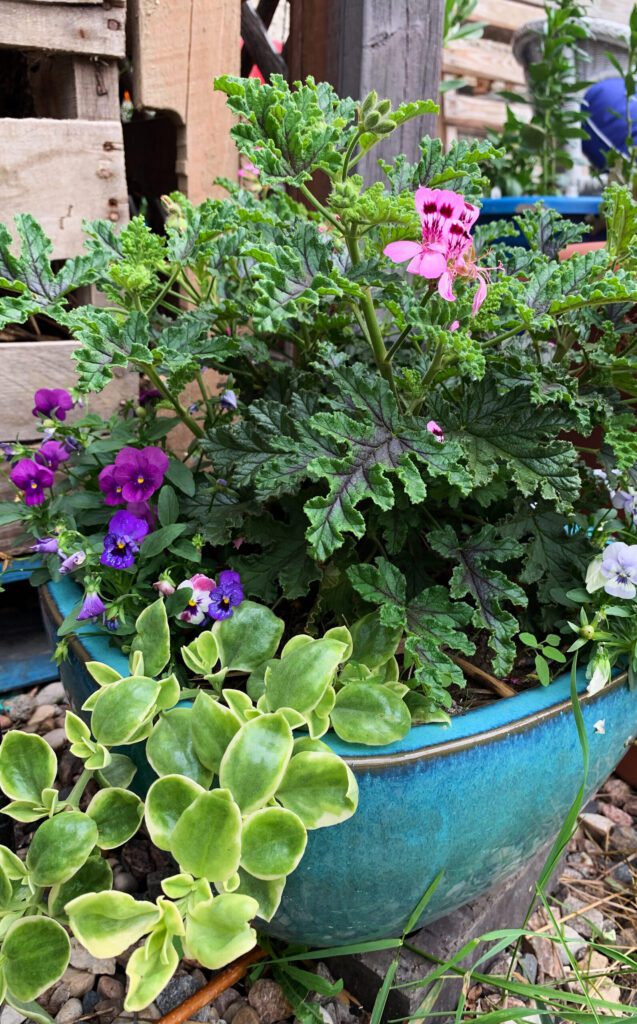
3. Plant a Mix of Herbs, Companion Flowers, and Vegetables
An outdoor garden space should be both practical and beautiful. With a good mix of herbs, flowers, and vegetables, there’s always something to pick once the garden gets established.
This year I planted leafy greens, pole beans, cucumbers, peppers, cherry tomatoes, basil, thyme, sage, rosemary, mint, patio-sized spaghetti squash, onions, marigolds, zinnias, snapdragons, and nasturtiums.
What should you plant? Whatever you actually like to eat, plus a new variety or two to expand your horizons.
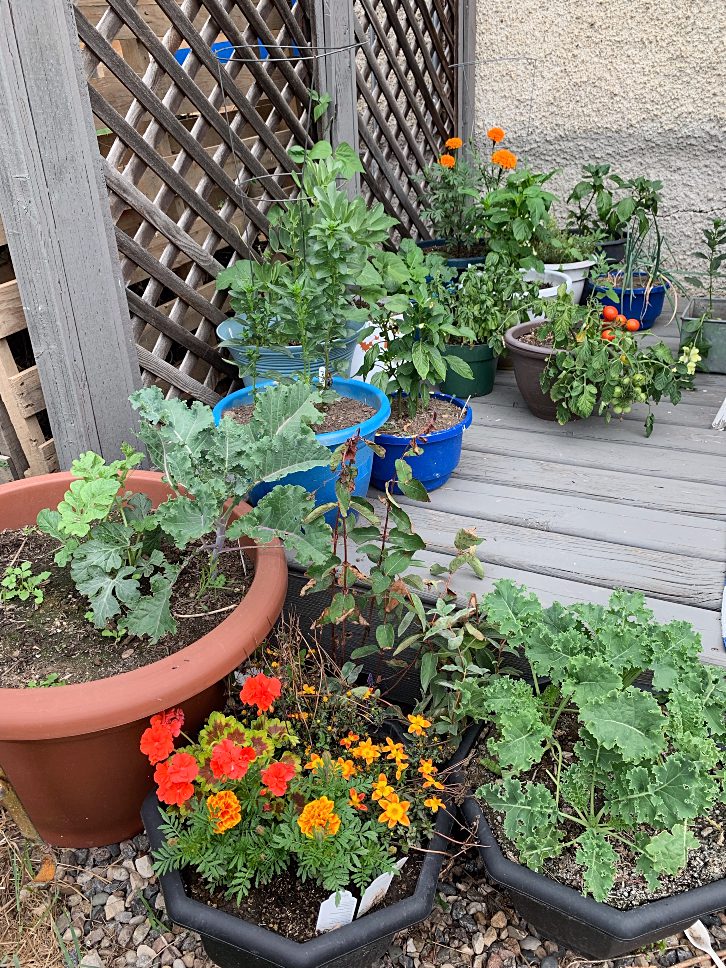
4. Choose Small-Scale Varieties When Possible
Over the years I’ve found that it’s important to choose varieties that work better in pots–cherry tomatoes instead of heirloom tomatoes, container-sized squash, and pole beans instead of bush beans. Both heirloom tomatoes and bush beans have worked for me in containers, the yields just haven’t been very good.
Kale grows well in pots, but the way I plant it, it remains miniature sized. I like to put 4 per 14 inch pot, but ideally I should only put one for bigger leaves. If you like baby kale, plant it like I do. If you want bigger leaves, plant only one in the pot.
Most seed catalogues and seed packets will state if a variety is suitable for container gardening. If you see a vegetable packet that says it grows well in pots–snap it up!
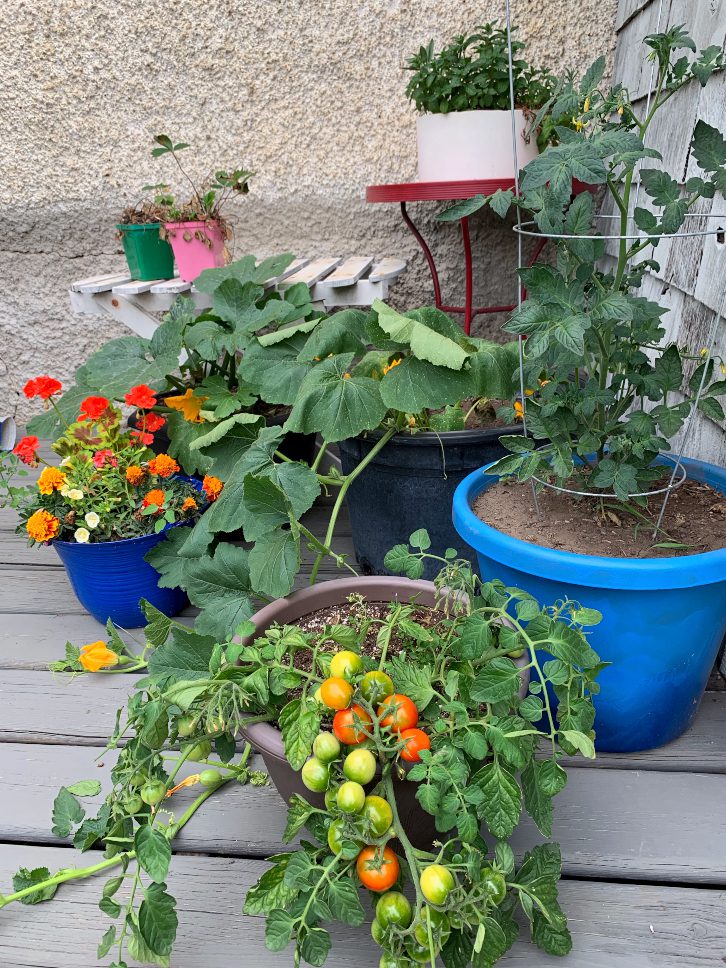
I also haven’t had a lot of luck growing successful root vegetables, but I know it can be done and I’m going to keep trying.
Whatever you grow, lead your vining plants like pole beans, squash, and cucumbers up trellises or pallets. I’m fortunate enough to have a trellis already attached to the deck on one side, so I lead my beans up there.
5. Consider Where the Rain Falls. . .Or Not.
One of my biggest mistakes the first time I tried to grow a container vegetable garden like this was putting my plants too close against the house. The rain usually didn’t get the plants that were under the overhang, and they also tended to get hotter during the hottest afternoon sun. This lead to struggling and eventually dead plants as the summer progressed.
This year, I kept everything at least 1 foot/30 centimetres away from the house and my plants did much better.
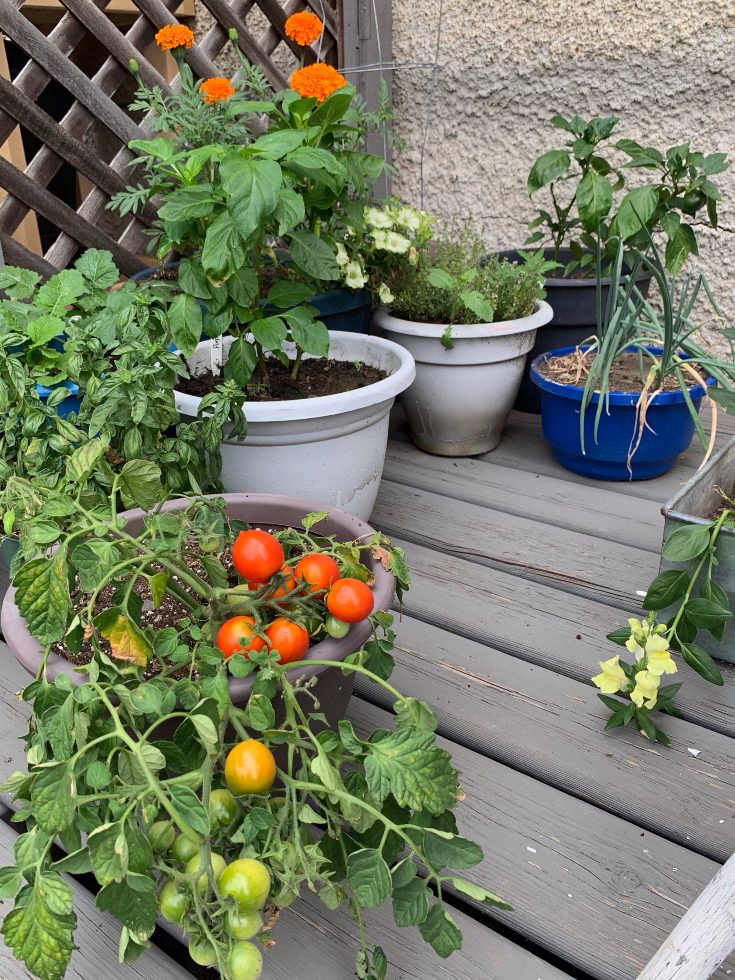
6. Water Daily
Okay, so you might not have to water daily all the time. However, container gardens usually require a more diligent watering schedule that regular in-the-ground gardens. You can combat the need for constant watering by surrounding your plants with mulch, but during the hottest days you might need to water your plants in both the morning and evenings.
This year, I actually had the opposite problem, in which it rained so hard for so many days that any of my pots without a drainage hole were completely saturated and had standing water in them. I had never experienced this before, as the Canadian Prairies tend to be more prone to drought.
Next summer I’ll remedy my pots. However, I was forced to take as much of the standing water away and I didn’t need to water my pots for over two weeks.
P.S. Speaking of pots, if you like my blue pots in the pictures, here’s how I decorated them and step-by-step directions so you can get the look.
7. Use Started Plants
Can you grow vegetables, flowers, and herbs directly from seed in a pot? Sure. But in my experience, they take forever to grow and my birds end up eating most if not all of the seeds. If it’s a vegetable or herb that can be started indoors, you’ll have more success with a starter plant.

One of my favourite vegetables to plant in containers are Hungarian Wax peppers. I’ve always had great results, even if I’ve neglected them a little bit.
On a side note, this was also the year that I really perfected my pepper growing process. Get all my secrets here!
I also am a huge fan of Crackerjack marigolds. They’re the really tall ones (instead of container sized) and I like them because they provide a bold hit of colour and can be used as both a companion flower and a cut flower.
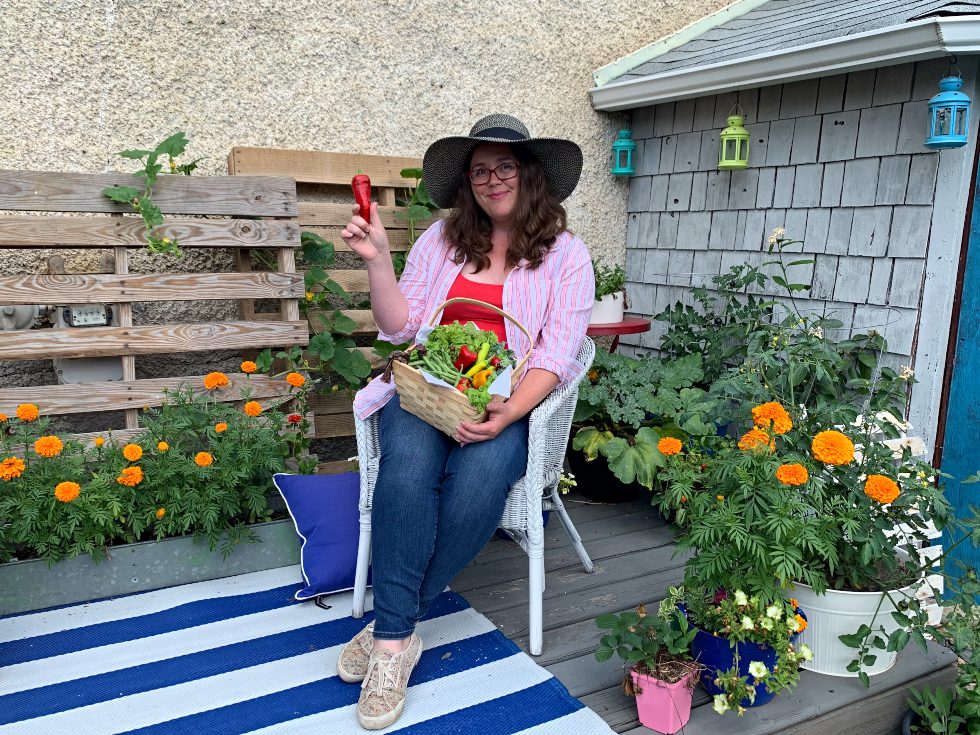
8. Bring Your Houseplants Outdoors
Most houseplants love to spend a summer outdoors, soaking up more sunlight and rainwater. I brought my lemon tree outdoors (pictured near the side below) and it finally grew three decent-sized lemons. I garden in zone 3, so it is a bit of a struggle to get a lemon tree thriving in my area, but it can be done!
I personally don’t bring out my shade-loving plants for the summer. I’m sure you could, as long as they’re in a shady spot, but my backyard doesn’t have any consistent shade to put them in.
By bringing your houseplants outdoors, you instantly add an extra layer to your garden space without spending any extra money. Just be sure to harden them off at the start of the season, just like you would any other plant. Get more details on the hardening off process here.

9. Head to Your Garden Room Often and Enjoy.
I’ll never forget the moment I was sitting in my garden room one morning, drinking coffee, and looking out into my yard. For the first time in 4 years, I loved what I saw, and it brought me a deep happiness.
My garden room became a place where I could go to unwind, and it was my go-to place to entertain the baby in the grumpy hour before bedtime. She wasn’t mobile yet, so I could safely leave her on the deck with a few vegetables or edible flowers for her to play with and do a bit of yard work nearby. If you have a mobile baby or toddlers, this will probably not work.
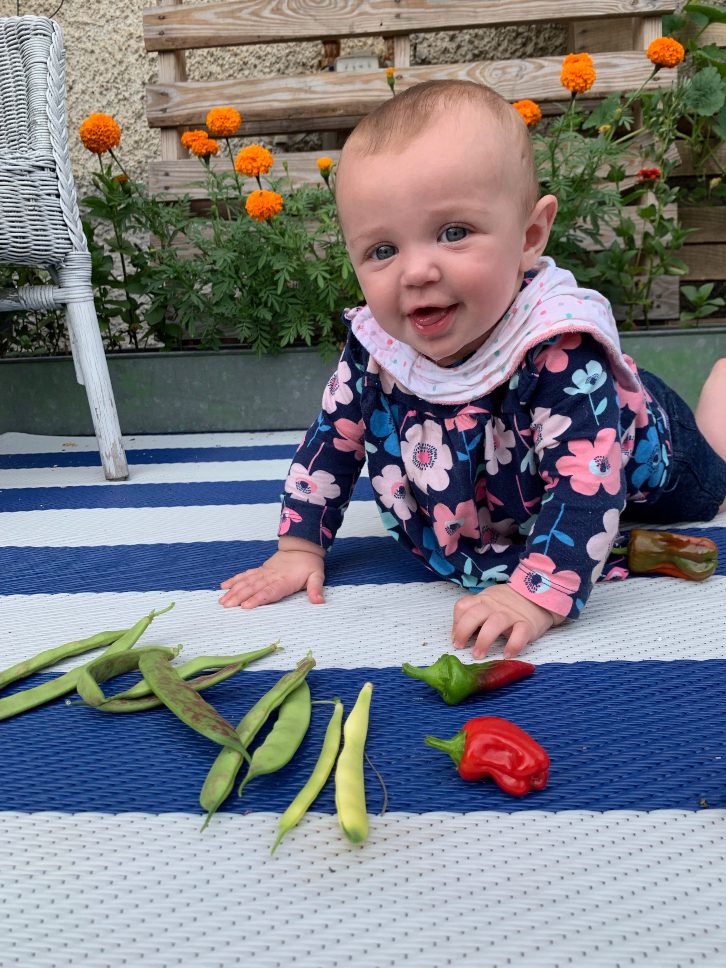
Finally, one last surprise I experienced in the container garden this year was how well tall cut flowers grew in pots. I had no problem with cut flower-sized marigolds, snapdragons, and zinnias. This summer I’m going to experiment more to see how many other typical cut flowers can be grown in pots.
Looking for more help with your cut flower garden? Here’s the best perennials and best annuals to plant.

So that’s my little garden room! Will you grow a container garden in your small space? Any tips or tricks we should know about? (Just remember to include your growing zone or approximate location in the comments for context.)
Pin this for later!


Join the conversation